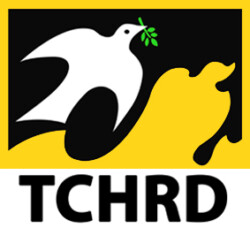
A former Tibetan political prisoner named Sonam Gyalpo was released last month after serving a 12-yr prison term at Chushul (Ch: Qushui) Prison located in the west of Lhasa City.
Sonam Gyalpo, now about 56 years old, was released on 27 August and is believed to have returned to his hometown in Lhoka (Ch: Shannan) Prefecture in Tibet Autonomous Region (TAR). No further details are available.
In more than three decades, Sonam Gyalpo had spent an aggregate of 16 years in prison on vague and overbroad political charges including the third prison term of 12 years.
As reported by TCHRD, Sonam Gyalpo was detained on 28 August 2005 by a group of Chinese State Security Bureau officers from his home in Lhasa. He was among ten Tibetans detained during the run-up to the 40th founding anniversary celebration of the TAR, an important political anniversary for the Chinese authorities. During the anniversary celebration, Chinese authorities had stepped up a close vigil and control in Lhasa and other parts of Tibet to ensure smooth and hassle-free event and also to propagate an image of a “happy, modern and prosperous Tibet”. The State Security Bureau officials conducted random searches in the houses of those deemed ‘politically suspect’. Sonam Gyalpo’s home was ransacked and the officers discovered “incriminating” evidence in the form of four videotapes containing religious teachings of the Dalai Lama, some books and pictures of the Dalai Lama.
Around mid 2006, the Lhasa Intermediate People’s Court sentenced Sonam Gyalpo to 12 years imprisonment on charges of “endangering state security”. Prior to his sentencing, he was held incommunicado for about 10 months at Seitru Detention Centre (“TAR” Public Security Bureau Detention Centre) in Lhasa.
Sonam Gyalpo was first detained on 27 September 1987 in Lhasa. At the time he was a monk at the Drepung Monastery and was among 21 monks who initiated the Tibetan independence demonstrations in Lhasa in 1987. He was later charged with “counter-revolutionary” activities and sentenced to three years in Drapchi Prison. He was then released on 20 September 1990.
The ‘counter-revolutionary’ charges were one of the most abused provisions in Chinese Criminal Procedure Law (CPL) and in 1997 under international pressure, China replaced the ‘counter-revolutionary’ crimes with ‘endangering state security’, which refers to a cluster of vaguely-worded political offences now being abused with alarming regularity to silence and persecute human rights activists and government critics in Tibet.
His second detention took place in 1993 upon his return from a trip to Nepal, where he had visited his brother, and also travelled further to India to receive blessings of the Dalai Lama. Chinese security personnel searched his hotel room at Dram (Zhangmu) on the Tibet-Nepal border. At around midnight on 23 July 1993, he was arrested at his home apparently for travelling overseas without valid documents. He was first detained at the Seitru detention centre for a few days, before being taken to Nyara Prison in Shigatse. After six months of incommunicado detention at Nyara Prison, he was transferred to Sangyip Prison in Lhasa, where he spent a further six months.
